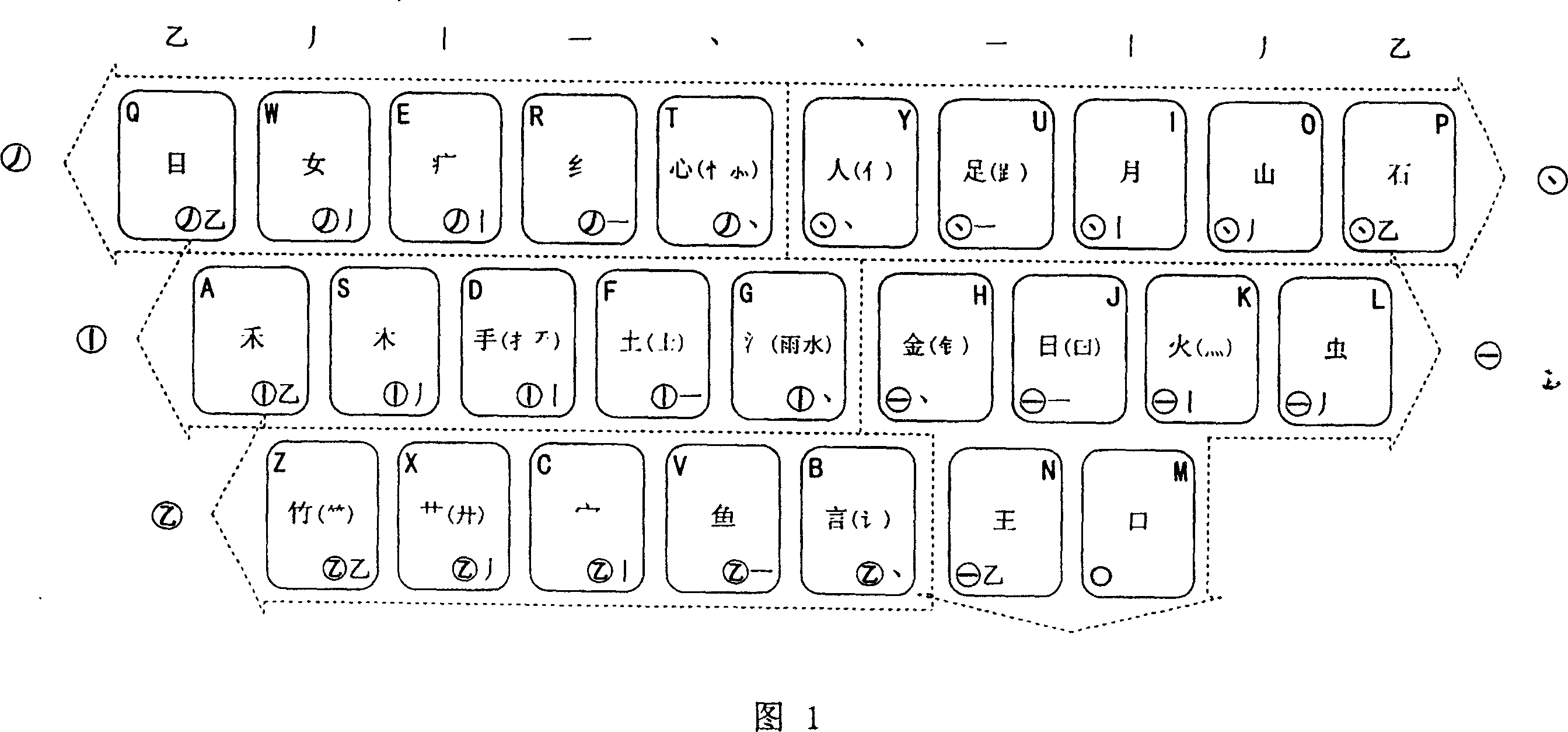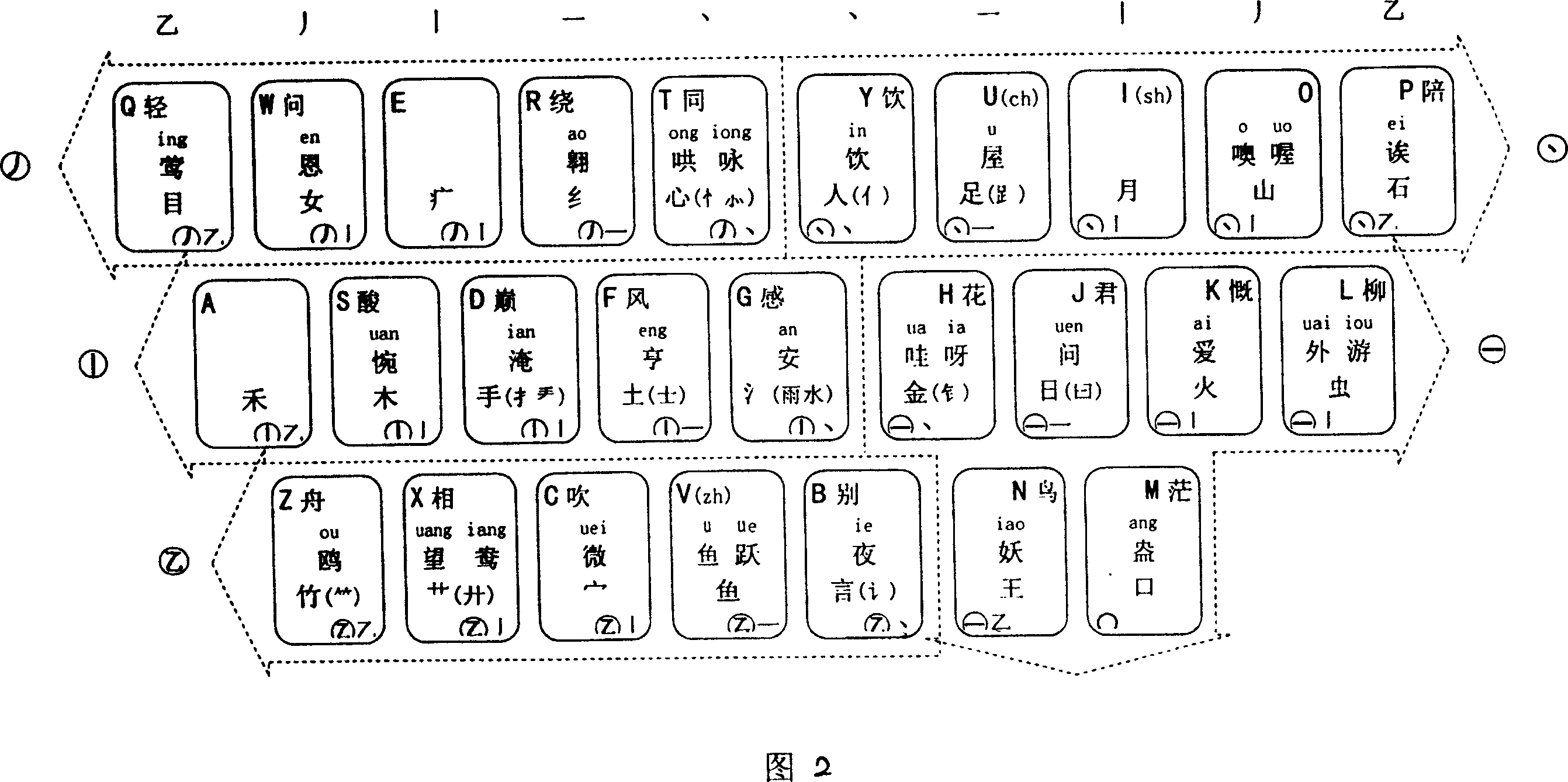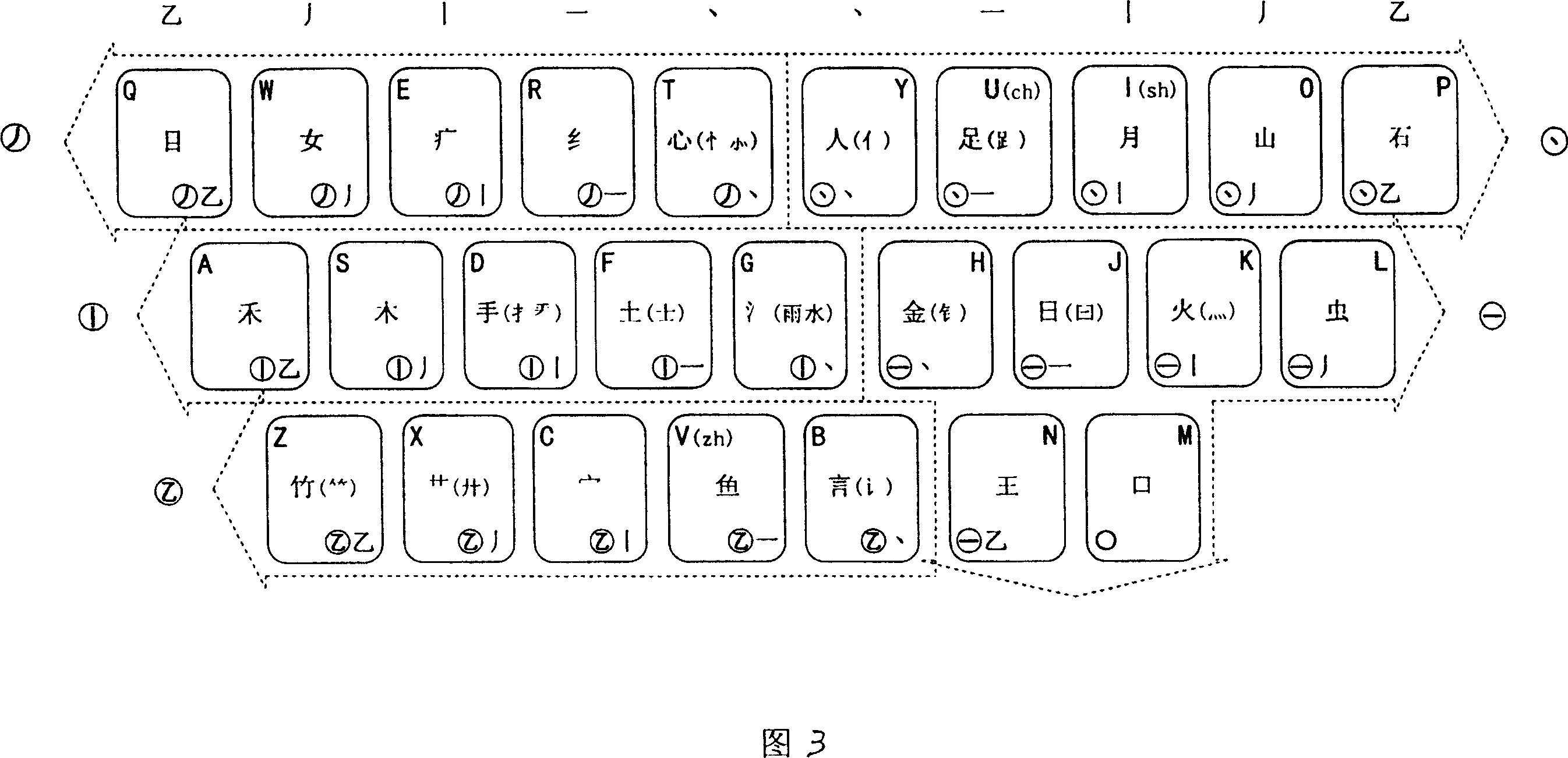Stroke Chinese character input method
A Chinese character input and Chinese character technology, applied in the field of stroke Chinese character input method, can solve the problems that the input speed of phonetic codes and ease of learning need to be improved, and achieve the effect of fast input speed, short codes and few repeated codes
- Summary
- Abstract
- Description
- Claims
- Application Information
AI Technical Summary
Problems solved by technology
Method used
Image
Examples
Embodiment 1
[0067] Fig. 1 is the arrangement distribution diagram of the pen type and radical in the embodiment 1 of the present invention on 26 English letter keyboards. In the present invention, the strokes of Chinese characters are classified into five types of "dot, horizontal, vertical, left, and fold", and are respectively represented by ",, one, 丨, 丿, and B". 25 types of pens (take 2 single strokes as pen types when only 1 single stroke is used). Divide the left and right sides of the 26 keys into 5 rows of "dot, horizontal, vertical, skimming, and folding", respectively using symbols express. Each row is divided into 5 seats of "dot, horizontal, vertical, left, and fold", which are respectively represented by ", 一, 丨, 丿, B", and correspond to the 5 keys of "index finger, index finger, middle finger, ring finger, little finger" . Then " pen type " is exactly " row seat " in 26 keys, as shown in Figure 1.
[0068] The present invention selects 26 common radicals and radicals as r...
Embodiment 2
[0089] Fig. 2 is the arrangement distribution diagram of pinyin, pen type and radical on 26 English letter keyboards in the embodiment 2 of the present invention. Wherein the pen type among the embodiment 2 and the arrangement distribution of the radical on the keyboard are exactly the same as the embodiment 1.
[0090] In an embodiment, take Chinese character pinyin, stroke type (or radical) respectively as 1 unit code, and pinyin, stroke type or radical get the code of the key position of Chinese character initial consonant and final syllable, stroke type or radical respectively.
[0091] Among them, the initials Zh, Ch, Sh are represented by letters V, U, and I respectively. When the syllable has zero initial consonants, the initial consonant takes the first pinyin letter, the final er is represented by the letter R, and ü and üe are represented by the letter V.
[0092] The distribution of final vowels on 26 keys is as shown in Figure 2. Each final has 2 mnemonics, for e...
Embodiment 3
[0110] Fig. 3 is the arrangement and distribution diagram of pinyin, pen type and radical on 26 English letter keyboards in embodiment 3 of the present invention. Wherein the arrangement distribution of pen type and radical on the keyboard is exactly the same with embodiment 1, embodiment 2.
[0111] The main difference between the present embodiment and embodiment 2 is: in the present embodiment, each Chinese character only gets a pinyin sign indicating number, and all the other three code elements get the pen type or radical, and fill " M " key when encoding is insufficient. The pinyin code takes the initial consonant (or the first pinyin letter) of a Chinese character. Among them, the initial consonant Z takes V, Ch takes U, and Sh takes I. When the syllable has zero initial consonant, the initial consonant takes the first pinyin letter. When there is only one single stroke, take two single strokes as the stroke type.
[0112] Input example of a single Chinese character:...
PUM
 Login to View More
Login to View More Abstract
Description
Claims
Application Information
 Login to View More
Login to View More - R&D Engineer
- R&D Manager
- IP Professional
- Industry Leading Data Capabilities
- Powerful AI technology
- Patent DNA Extraction
Browse by: Latest US Patents, China's latest patents, Technical Efficacy Thesaurus, Application Domain, Technology Topic, Popular Technical Reports.
© 2024 PatSnap. All rights reserved.Legal|Privacy policy|Modern Slavery Act Transparency Statement|Sitemap|About US| Contact US: help@patsnap.com










